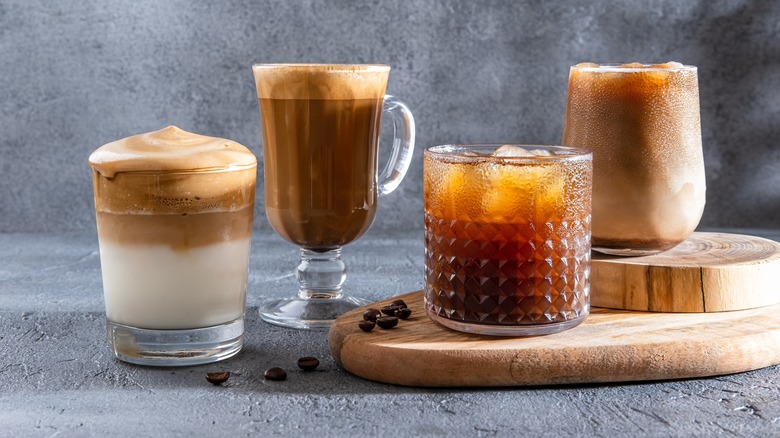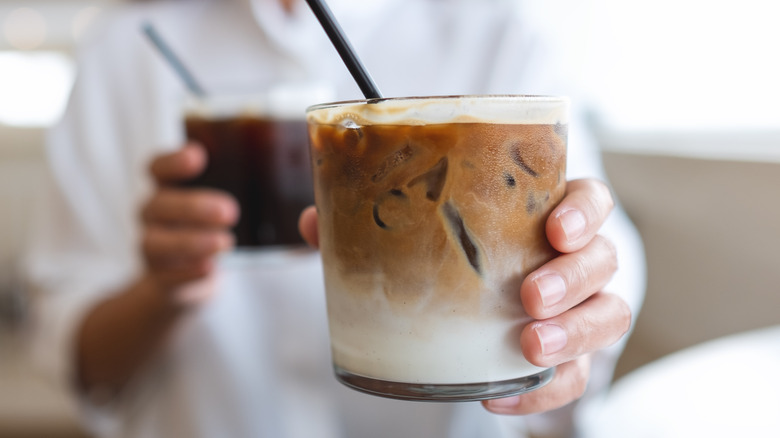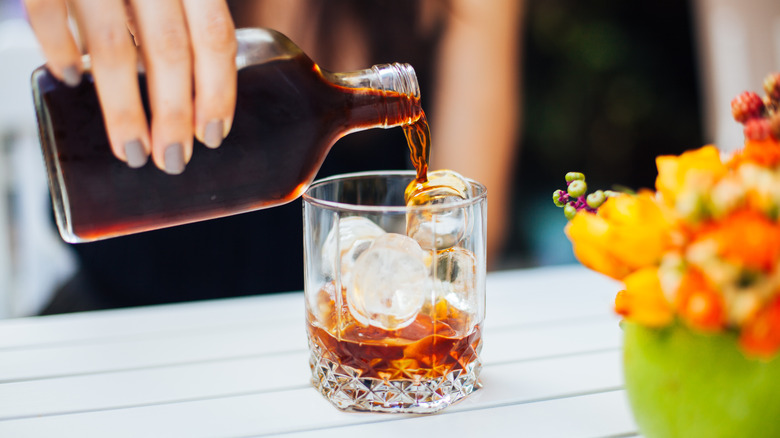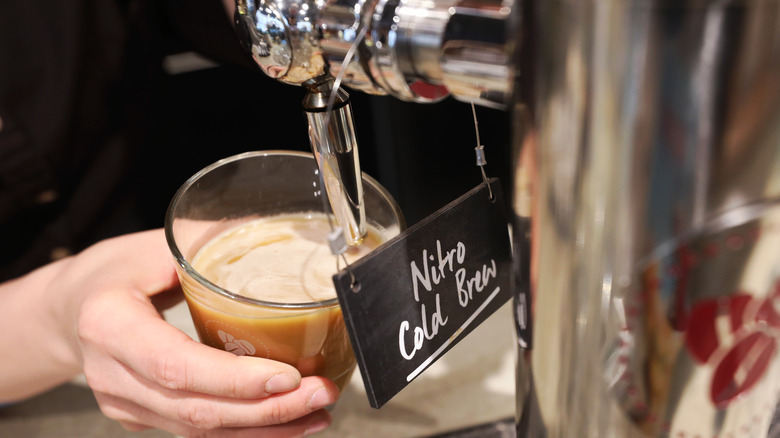Get To Know Your Cold Coffee Types: Iced, Cold Brew, And Nitro
With roughly 400 billion cups of coffee consumed globally every year, it's hardly surprising that the universally loved drink continues to evolve. Reinventing tradition is a hallmark of coffee devotees, including expanding cold coffee incarnations. Three basic types of coffee are leading the iced revolution.
The humble iced coffee piggybacks on hot brewing by adding ice cubes, while other chilly java drinks spring from entirely different extraction methods. There's the cold brew procedure that extracts delectable coffee liquid with no heat at all, and then there's a relatively new coffee kid on the block: a fizzy nitro cold brew.
All three harbor plenty of caffeine — some more than others, depending on preparation — but you can also order or make them sans the caffeine buzz. The common thread between them is the icy, crisp-cold temperature, regardless of the season or how the drink entered your cup. That part is entirely up to you and your java-craving tastebuds.
Iced coffee
Iced coffee staked its claim in home kitchens long before trendy coffee shops elevated it to gourmet status. That's because a basic iced coffee drink is one of the easiest cold caffeinated beverages to make. The ingredients and machinery are already part of most households: ground coffee and a standard coffee maker.
Whether using a drip machine, French press, espresso maker, percolator, pour-over, or even a capsule/pod machine, the principle is essentially the same: Use heat to brew a cup of coffee, let it cool, pour into a glass, and add ice. Stir, and enjoy!
Obviously, simple iced coffee can be customized like any other coffee treat, often with milk, sugar, cinnamon and vanilla, chocolate, or caramel sauces. It's also common for baristas to create iced versions of a latte, mocha, macchiato, flat white, or any other favorite brewed coffee drink.
Iced coffee is essentially ready to go as soon as it's brewed, cooled, and iced — but you'll need to plan for a cool-down time of at least one hour. After adding the ice, the flavor will diminish as the ice slowly melts, but there's a helpful hack for that. Freeze some cooled brewed coffee in ice cubes and prepare them for your next iced coffee treat. If an iced coffee latte is your go-to cold drink, stir some milk into the cubes, along with the coffee before freezing.
Cold brew coffee
Cold brew is often confused with iced coffee, but they are not the same — at all. Both are served cold, but the similarities stop there. The primary difference is that while iced coffee is brewed first with hot water, the cold brew method uses either cold or room-temperature coffee. Since it steeps for eight to 24 hours, the temperature usually becomes "ambient," adapting to its environment. Time replaces heat for this type of "brewing," extracting the essence of the beans without scorching them.
Advocates for cold brew coffee point out how the absence of heat removes the potential for bitter notes, which can appear in iced coffees if not brewed to ideal standards. Cold temperatures are less likely to draw oils from the beans, so you end up with a milder, low-acidic cup of coffee that retains the rich essence of freshly ground beans.
Water ratio plays a big role in cold brews, using far less than typical hot brews. Cold brewing essentially creates a coffee concentrate with roughly one part coffee to four or eight parts water. By comparison, hot brewing in a drip machine typically employs one part coffee to 16 or 20 parts water.
With the resulting coffee concentrate, it's possible to control the final outcome by how much water you add. Depending on the preferred dilution, you could have a highly caffeinated drink and a rich, strong cup of cold java. The concentrated liquid lasts up to two weeks when refrigerated.
Nitro cold brew coffee
Unlike iced coffee, nitro brewing is a close sibling in the cold brew clan. That's because it comes to life under the same cold brewing method using cold or room-temp water. It just gets some extra pizazz from an infusion of nitrogen — and a noticeable difference in taste, texture, and purity.
The dose of added nitrogen in a nitro cold brew coffee essentially displaces oxygen, decreasing the potential for oxidation and a loss of flavor. This results in a naturally sweeter, creamier taste without reducing the purity of the extracted liquid. The fizzy nitro bubbles are slower to dissolve in water, so you also benefit from thick texture, a fluffy head of foam, and full-bodied coffee in your cup. Since the liquid in a nitro brew comes from cold brewing rather than hot, you still get the other advantages of the standard cold brew: less bitterness, lower acid, and a soothing mild mouthfeel.
The easiest way to indulge in a perfectly poured nitro cold brew is by ordering it from a professionally trained coffee shop barista. But it's not the only option: Plenty of specialty coffee purveyors offer home nitro cold brew makers in a keg-style contraption with nitrogen gas cartridges.




